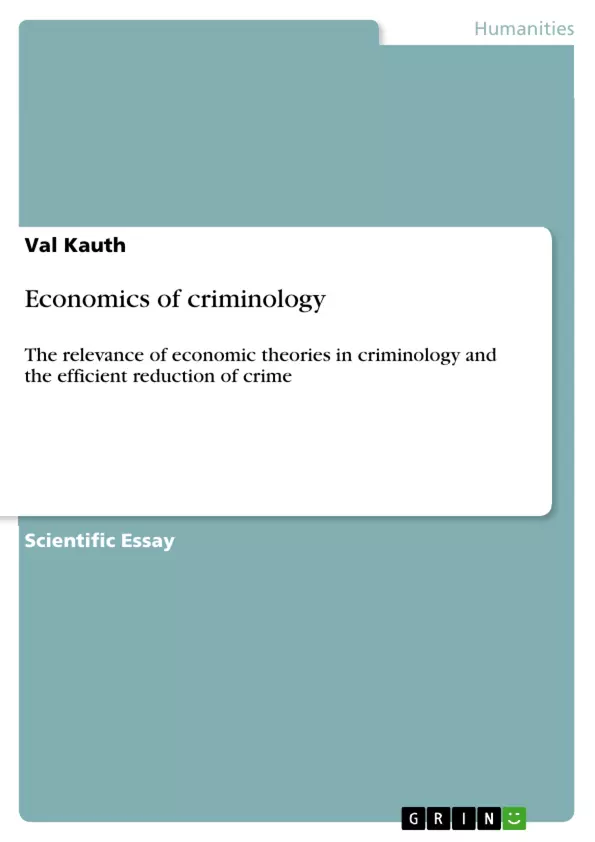Criminality is and has always been an urgent issue for the society. Its magnitude has been rising dramatically in many western countries. Since 1946, crime rates in Britain have increased by the factor 10 and nowadays about 25% to 30% of the OECD-citizens are victimised each year.
Together with criminality, public expenditure for the Criminal Justice System (CJS) has been rising sharply. In order to achieve one of the declared main purposes of the CJS, “to reduce crime and the fear of crime and their social and economic costs”, theories of crime are an important contribution of the sciences. Accordingly, they are an important subject in many scientific fields: Psychology, Sociology and the Economic Sciences offer a large variety of different theories to explain the diverse aspects of criminality.
The following text will discuss how and to what extend theories of crime and in particular economic theories of crime can help to reduce crime and the fear of crime.
In the process, first the economic and social cost- dimensions of crime will be elucidated. Then, crime theories and in particular Becker’s theory as the pioneering work of economic criminology will be introduced. Eventually, a critical view on theories of crime and the economic approach as well as an analysis of its distinctive advantages will be elaborated.
Table of Contents
- Introductory remarks
- The economic and social costs of crime
- Crime theories
- Economic theories of crime
- Critical view on theories of crime
- The application and benefit of economic theories of crime
- Conclusion
Objectives and Key Themes
This text aims to explore the role of economic theories in criminology, specifically examining their potential for reducing crime and fear of crime. It delves into the economic and social costs of criminal activity and analyzes how various theories, particularly those of Becker, can shed light on the complexities of criminal behavior.
- The economic and social costs of crime
- The effectiveness of various crime theories
- The application of economic theories to crime reduction
- The role of rational choice theory in understanding criminal behavior
- The potential benefits of economic theories in reducing fear of crime
Chapter Summaries
The text begins by highlighting the increasing prevalence of crime and the corresponding rise in public expenditure for the criminal justice system. The first chapter emphasizes the importance of understanding the economic and social costs of crime, which are categorized into costs incurred in anticipation of crime, costs resulting from criminal activity, and costs incurred in response to crime. The second chapter discusses the limitations of relying solely on one crime theory to explain complex criminal behaviors. It emphasizes the importance of understanding the underlying causes and principles of specific crimes to develop effective countermeasures.
The third chapter delves into the history of economic criminology, highlighting Gary Becker's pioneering work. The chapter emphasizes the concept of rational choice theory as a foundation for economic theories, emphasizing the assumption of rational utility maximizers within this framework. Finally, the text explores the benefits and limitations of economic theories, acknowledging the complexity of criminal behavior and the need for a holistic approach to crime reduction.
Keywords
The primary focus of this text lies on economic theories of crime, rational choice theory, and the application of economic principles to understand and reduce criminal behavior. The text also examines the economic and social costs of crime, the limitations of traditional crime theories, and the importance of a holistic approach to crime reduction.
- Quote paper
- Val Kauth (Author), 2007, Economics of criminology , Munich, GRIN Verlag, https://www.grin.com/document/115108



